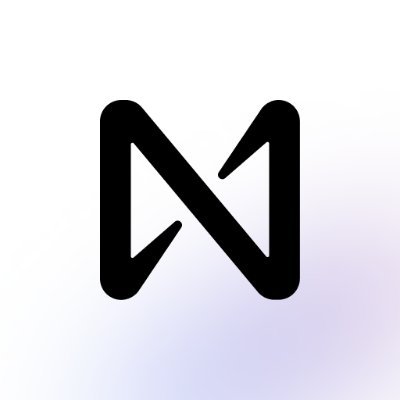IOSG: From bridge liquidity to chain abstraction full-stack framework, what innovations have we seen?
Author: IOSG Ventures
Chain Abstraction
Humans are typically not asset managers, but they are forced to become currency managers. In the United States, the average number of bank accounts per person is between 3 and 4, indicating that even in a highly developed banking system, Americans manage only about 4 accounts on average, despite money being able to flow seamlessly between these accounts.
Among the top 25 projects by market capitalization, 15 are "consumer-centric L1" projects. Will ordinary non-crypto consumers engage with more than 3-4 chains? Do they also need to view their gas tokens as assets?
With the rapid growth of the crypto market, I believe the market is ready to choose their favorite three chains (including rollups). If technology is advancing, why do they still need to do this?
Chain abstraction is the ultimate game of liquidity fragmentation in cryptocurrency. When there is liquidity fragmentation across different DEXs, DEX aggregators prevail; when there is liquidity fragmentation across different bridges for cross-chain operations, bridge aggregators emerge (of course, bridge aggregators contribute far more to the ecosystem than just this); finally, when liquidity is fragmented across different chains, the intuitive meaning of chain abstraction becomes very clear. We have long said, "One day, users won't even know which chain they are using."
This is why I am optimistic about the concept of chain abstraction. It helps significantly increase cryptocurrency participation without users having to bear the psychological burden of maintaining multiple accounts across multiple chains. This article will delve into the implementation of the concept of chain abstraction, its pros and cons, trade-offs, and the potential winners.
I define chain abstraction as: any user's intent initiated on the chosen chain (where liquidity resides) and executed on the chain where the application is located (where the result resides).
The user submits an intent on chain A, and through some magical operations, the user obtains the desired result on the target chain or back in the same wallet.

This "magic" can be achieved through various means, involving different trust assumptions, adoption curves (including users and developers), and the ultimate chain abstraction experience that the application aims to unlock. Different projects have different views on chain abstraction, but here are the key aspects to achieving this goal. Different projects are addressing different aspects, and by the end of this article, you should have a fair understanding of the key elements needed and what the final scenario might look like.

Interaction Layer
These projects aim to implement chain abstraction from the user's first interaction.
For users, this may look like a multi-chain version of account abstraction, manifested as a wallet or a unified front-end interface for interacting with multiple chains (e.g., cross-chain lending platforms).
Projects built in this direction include: NEAR, Particle Network, Light.
NEAR Protocol
The NEAR protocol aims to simplify user abstraction of blockchain as much as possible. They have relayers to subsidize gas fees, an authentication service for account recovery via email (very similar to a Web2 user experience), and most importantly, NEAR accounts can generate multiple signature types.
Applications can remain static with almost no development costs except for integrating the NEAR wallet.
Multiple signature types help users interact with multiple chains simultaneously. While this sounds simple, addressing liquidity and messaging is crucial. NEAR must be able to connect to multiple chains through one or more messaging protocols and liquidity networks.
Being closest to the users, NEAR must also actively market and capture a high market share.
Particle Network
Particle Network holds a similar view on chain abstraction. They initially started as an AA wallet within the EVM ecosystem but are now pursuing chain abstraction by creating "universal accounts" on their modular L1. This modular L1 is built using the Cosmos SDK, allowing Particle Network to communicate with any chain via IBC compatibility. They also use Berachain's Polaris framework to become EVM compatible with Cosmos chains.
Particle Network does not rely on any external protocols to provide liquidity. Since they are their own chain, they will optimistically execute cross-chain atomic transactions and have their own gas token.
We do see a lot of overlap between NEAR and Particle's approaches. While Particle controls most of the tech stack, they will also have the additional task of guiding and maintaining their liquidity network, aside from the similar issues faced by NEAR.
Light
Light.so is a relatively new project that adopts an account abstraction approach but is limited to the EVM (Ethereum Virtual Machine) ecosystem. By leveraging typical gas fee abstraction and batch execution advantages, they have transformed the wallet user experience, providing a complete dashboard-like experience. Light is committed to abstracting many common operations and providing users with a dashboard-like experience.
Future development paths may include integrating various DeFi operations into the dashboard, such as swaps, borrow/lend, structured yield products, etc. However, to facilitate these operations, the backend still needs bridging/messaging layers.

Communication Layer
The interaction layer needs to go through a task execution layer, which can be bridges, proxies, validators, or any infrastructure that can achieve cross-chain interoperability.
Standardized Validator Network
Across has taken the lead in cross-chain aggregators. Existing crypto users frequently using the Ethereum ecosystem may be familiar with Across. Across transitioned to an intent-driven structure in its V2 version and positioned itself as a leader in the bridge aggregator wars. This also facilitated the V3 version, allowing developers to conveniently combine bridging and protocol operations in a single transaction.
Hypothetical example: OpenSea integrates Across+. If I want to buy Base Chad s on Base, I just need to sign a transaction on Arbitrum using my chosen wallet, and then I can successfully purchase a Base Chad at the same address on Base.
This example is the easiest for us to understand because it looks like the solution we have been searching for.
This approach is very suitable for quickly purchasing chosen memecoins or buying NFTs listed on the market, but it may not be suitable for high-frequency activities like Telegram Bots or signing each operation as a transaction on a hosted poker game rollup. In the latter case, bridging and using rollups may achieve lower latency and better execution.
Anoma adopts a unique intent-driven off-chain approach, with a validator-based L1 and consensus mechanism. Developers can build directly on Anoma or use Anoma as middleware (essentially a validator network). To standardize communication within the network, Anoma has its own DSL that developers need to learn to leverage Anoma's network.
Standardization of validator networks is one of the hottest research areas in chain abstraction. Issues such as validator centralization, auction mechanisms, and the impact of open validator networks have been debated for a long time, and I will not delve into these issues here. Here is an excellent article on intent-based bridging architecture by Arjun Chand, which includes risks and trade-offs.
Projects like Ethereum Swap, UniswapX, and 1inch Fusion showcase top-tier execution of intent-based architectures. There is no doubt that intent-based architectures will dominate the cross-chain and chain abstraction space, but who will win? We have already seen that order flow is king. Validator networks that can guarantee optimal execution will capture the best order flow, regardless of where the orders come from. Can chain abstraction wallets provide them with the best order flow?
How good are validators for high-frequency activities? How good are they for transactions where latency is critical (e.g., purchasing low liquidity memecoins)? These may not be the best use cases for validator networks or chain abstraction in general.
The top activities that a mature validator network can achieve in the chain abstraction paradigm are large-scale cross-chain operations (e.g., moving ETH from all L2s to a single Ethereum mainnet account). Any area that requires studying overhead, integration overhead, bridging overhead (including aggregators), gas maintenance, etc., is where validator infrastructure can provide assistance. Purchasing Injective derivatives on Injective should be seamlessly done with one click, even if I have no funds.

Competitive Landscape of Validator Networks
To ensure execution, each validator network needs to integrate with certain contract sets. Across V3 is in a leading position with its intent-driven architecture, currently only needing to clarify integration issues with protocols. Protocols are likely to integrate with battle-tested projects like Across, and they will need to continuously innovate their architecture to attract more validators (or what they call relayers) to participate without compromising execution quality.
However, Across V3 is not a clear winner in terms of order flow. The Stargate bridge is competing directly with Across in terms of order flow and trading volume, and Celer Circle and cBridge also seem to be catching up.

Across is the only project with an intent-driven architecture and has consistently delivered excellent execution. For a long time, there has been a view that Stargate's trading volume is artificially inflated through incentives, but there is no way to verify this. However, while Stargate's trading volume can rival Across, the number of transactions has doubled. We will only be able to determine which trading volumes are incentive-driven and which are non-incentive-driven after the LayerZero airdrop is completed.
Socket adopts a unique approach by introducing a Modular Order Flow Auction (MOFA) architecture, where any of the aforementioned modules can submit orders or participate in auctions. I am not familiar with the underlying technology, but given the team's track record of releasing excellent products, this could be very interesting.

Image Courtesy: Socket
Bridges and Bridge Aggregators
"Cross-chain bridges are cumbersome to use" - User voice
Bridge aggregators used to be my favorite way to transfer assets across chains. They can ensure that assets are bridged to the user's chosen chain in the best way. While it is currently the best form of cross-chain transfer, it only abstracts the bridge itself and does not abstract the blockchain. Users still need to hold a minimum amount of gas on the target chain to complete cross-chain transfers. They also cannot help users execute operations on the target chain, which may add additional complexity to the user experience for those new to the field.
On a large scale, the efficiency of bridges does not match that of validator networks. Why? I recommend watching Hart Lambur's talk at EthDenver 2024 to understand why batching intents can be over 50 times cheaper than traditional bridges (see 9:11 - 13:25).
While I appreciate the teams and founders dedicated to building bridges that allow me to interact in a multi-chain world, I would prefer to eliminate 3-4 steps from the user flow and the accompanying slight anxiety.
Full-Stack Framework
Full-stack frameworks help create standards from the wallet layer to the settlement layer, seemingly achieving complete chain abstraction for users in terms of technical efficiency (security, communication, etc.). Frameworks like CAKE make protocols easy to adopt and integrate into the entire ecosystem.
For developers, relying entirely on a brand-new framework or chain to build projects will be very difficult. The motivation for developers to choose a specific framework is often order flow.
I do not know how to persuade an entire developer ecosystem that has already chosen its favorite environment to build projects to use a brand-new framework. This will be a battle heavily reliant on marketing and partnerships, as challenging as launching a new L1.
Participants in the full-stack framework include: CAKE, DappOS, Aarc.
Conclusion
A unified framework is crucial, and the leaders of each module will be determined by the best order flow. The best order flow depends on continuously providing optimal execution. The entire chain abstraction framework may look like the following:

If I had to introduce cryptocurrency to my grandmother, I might wait until NEAR or Particle Network releases their products. Because I do not want her to get caught in a cycle of learning about bridges/aggregators, validation, and maintaining multiple private keys, when she only needs an EVM wallet to purchase some token on Solana.
To achieve all these functionalities, some form of account abstraction, balance abstraction, and possibly gas abstraction will be needed, and many participants are tackling each issue.
Based on current information, the leaders of each module will determine the ideal framework. NEAR seems most likely to become the entry point for new order flow, Across appears to be a battle-tested project and is also the easiest to integrate (relying on the Chaos Labs team to further optimize the protocol, as they know how to win in a crowded ecosystem), and finally, the cross-chain messaging layer will provide a secure environment for auxiliary infrastructure (such as bridges and oracles) to settle assets moving across chains.












